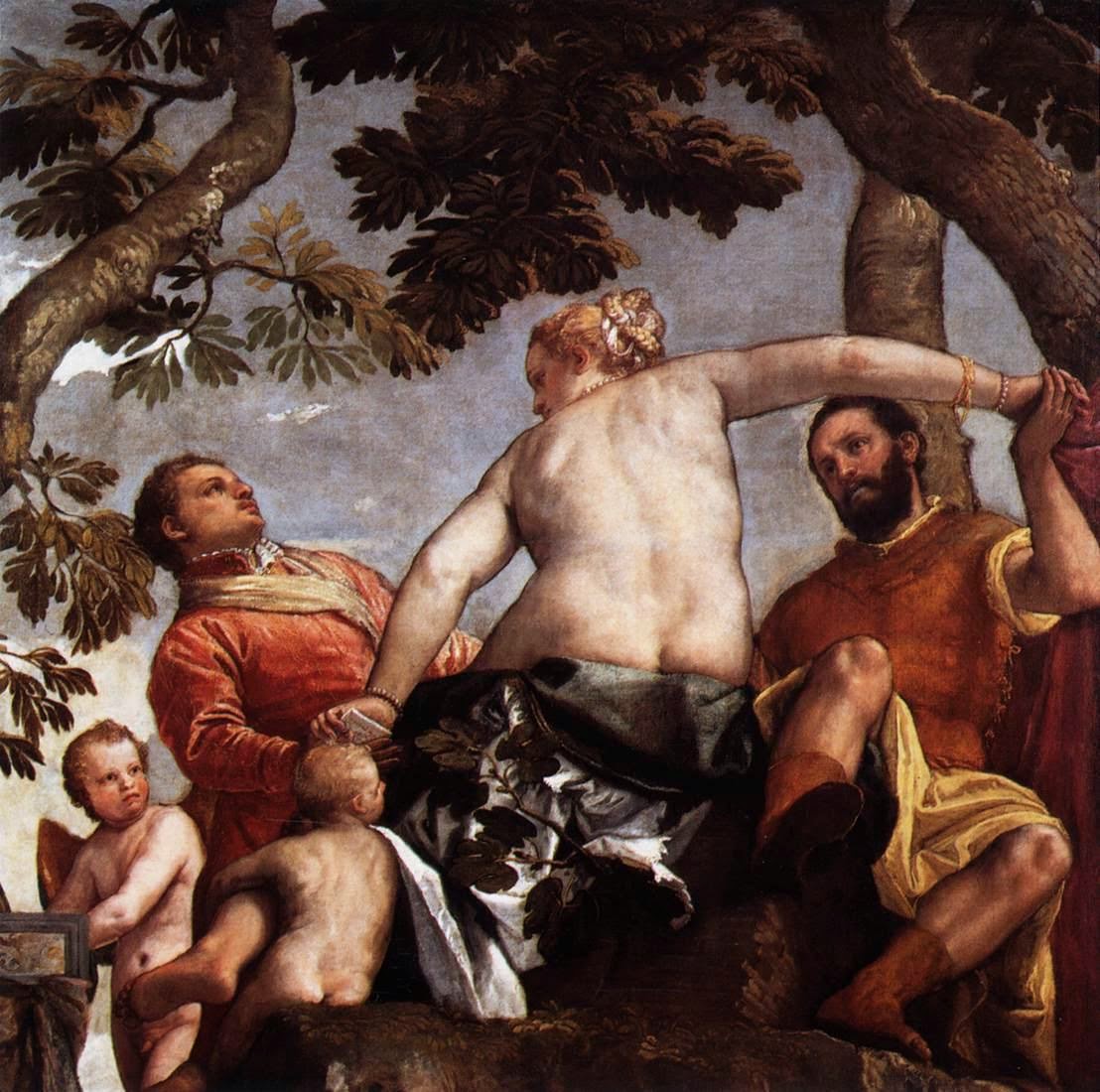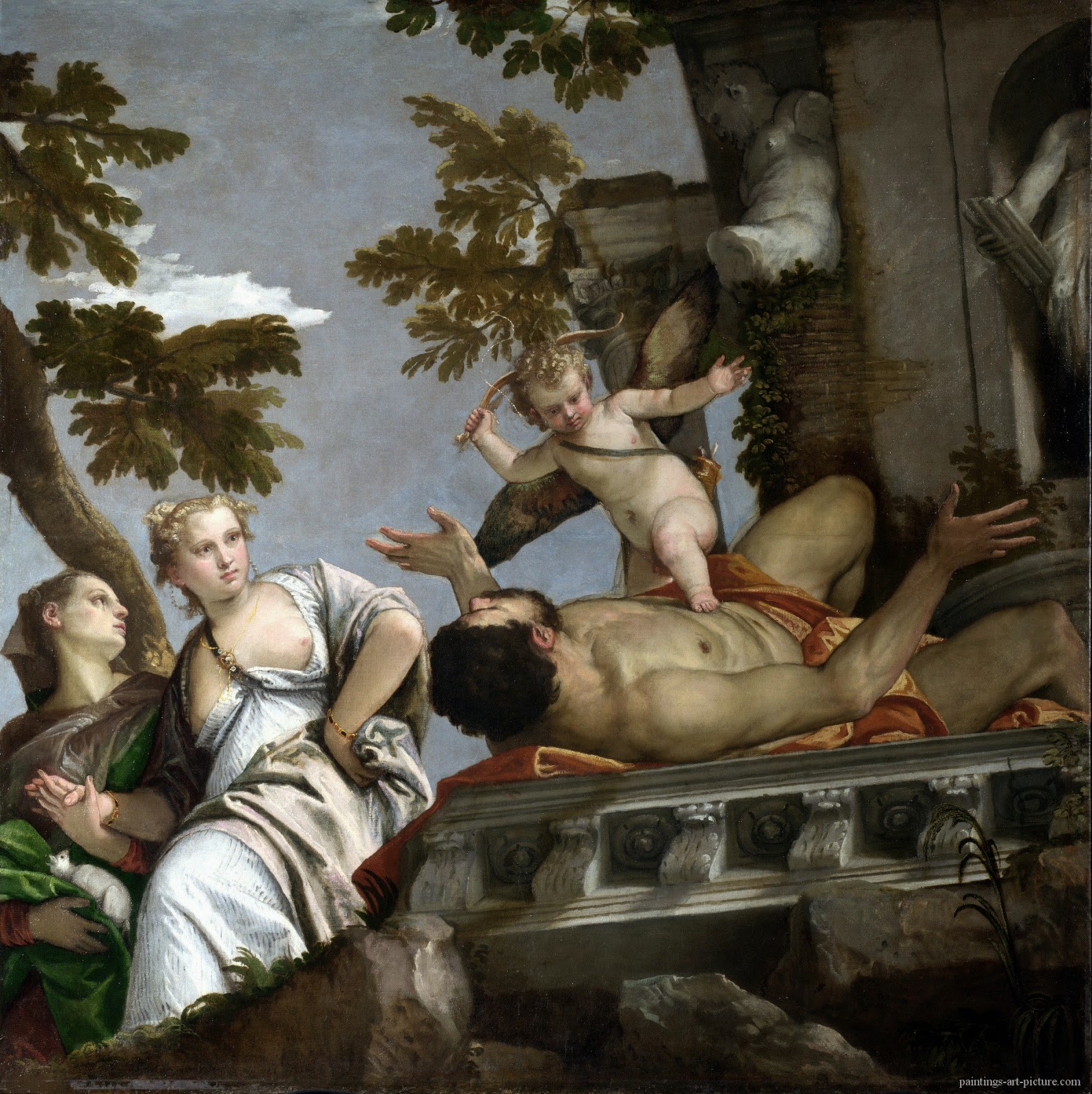 |
| Infidelity |
Paolo Veronese (1528-1588) painted the four Allegories of Love in the early 1570s. They hang now in London's National Gallery. Earlier this month T.J. Clark reviewed the Gallery's current Veronese exhibition in the London Review of Books (writing, as he cannot help doing, with the finest-combing, most revealing pictorial attention paid by anybody still alive on this newly & proudly superficial earth).
 |
| Disinganno (Scorn) |
"What is truly unique is not just his feeling for lustres and textures, but his ability to grasp and render a patterened fabric – the one in Disinganno, for example, or central to Happy Union – as a distinctive, essentially singular colour (a specific note in a colour scale or spectrum). Not pink cloth with gold brocading, then, or white with silver stripes and a light purple cloak, but an entirely felt-through (seen) gold-rose and silver-grey; the first in inimitable dialogue with the separated gold-yellow and green next to it ; the second shimmering exactly strongly enough to answer the folds of orange and gold wrapped around the naked man's groin."
 |
| Happy Union |
 |
| Respect |
"What seems to me the central feature of Veronese's achievement – I could use many examples, but let us focus on the counterpoised bodies in Respect – is a unique completeness of empathy with the figures he paints, so that one feels him almost physically entering into them, male or female, and deploying their weight and balance as if from the inside."
"The centre, or anchor, of Veronese's vision was this: an internal, material, comprehensive inhabiting of bodies, and therefore an ability to depict their glittering outsides as manifestations of their weight, their mechanics: the set of their skeletons, their centres of gravity, their muscle tone. I really do not see any other painter who can do this; that is, who is able to have these facts of deep structure and self-propulsion appear wholly on the outside of things, in the fall of a drape or the lustre of a fold of fat."
"Perhaps it is strange that the gift is so rare. But it is rare, maybe because human beings naturally divide experience in two, the inhabiting of the body being something experienced from the inside, and 'appearances' being felt as detached from that lived totality."